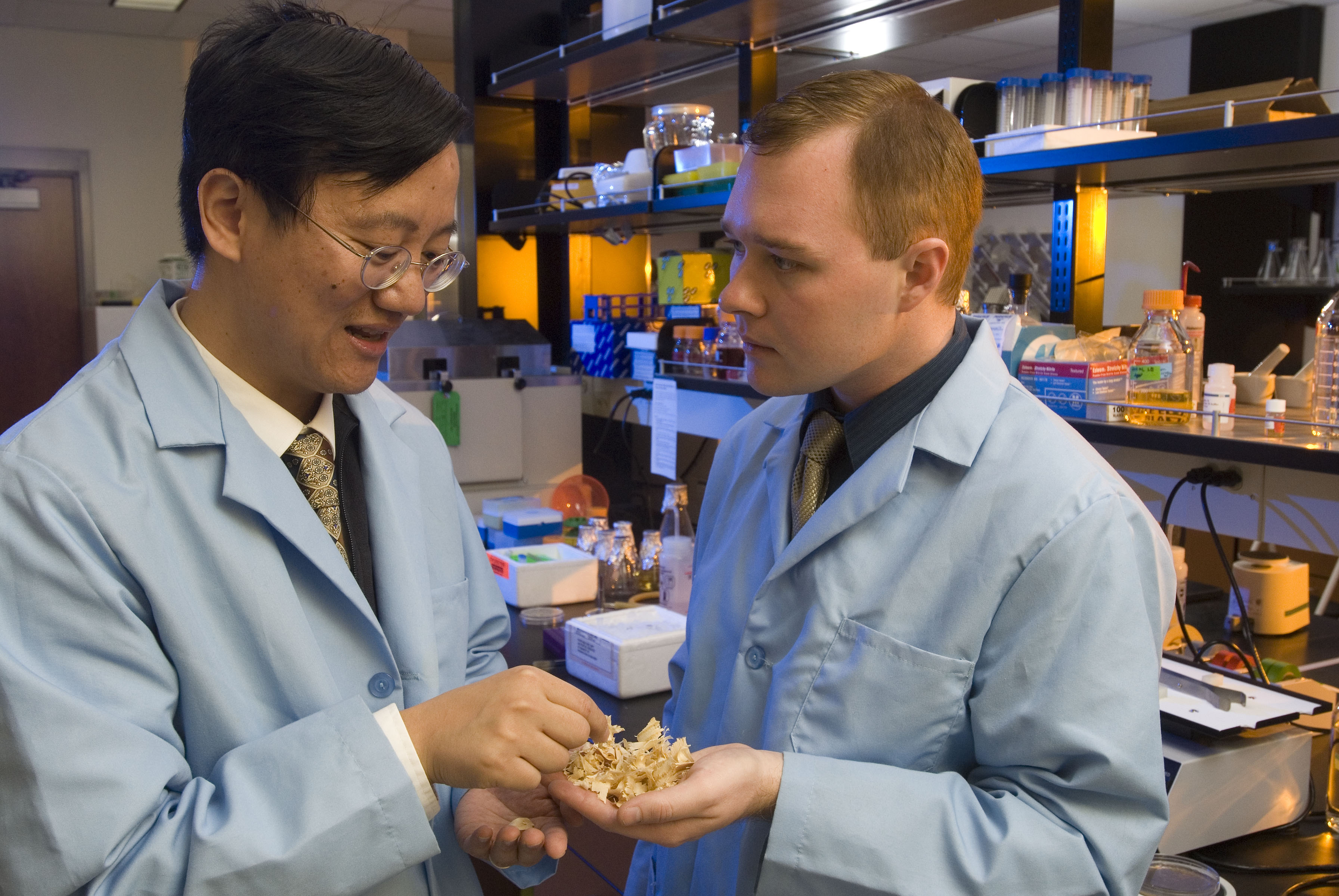Enzyme cocktail converts cellulosic materials, water into hydrogen fuel

Tomorrow's fuel-cell vehicles may be powered by enzymes that consume cellulose from woodchips or grass and exhale hydrogen.
Researchers at Virginia Tech, Oak Ridge National Laboratory (ORNL), and the University of Georgia have produced hydrogen gas pure enough to power a fuel cell by mixing 14 enzymes, one coenzyme, cellulosic materials from nonfood sources, and water heated to about 90 degrees (32 C).
The group announced three advances from their "one pot" process: 1) a novel combination of enzymes, 2) an increased hydrogen generation rate -- to as fast as natural hydrogen fermentation, and 3) a chemical energy output greater than the chemical energy stored in sugars – the highest hydrogen yield reported from cellulosic materials.
"In addition to converting the chemical energy from the sugar, the process also converts the low-temperature thermal energy into high-quality hydrogen energy – like Prometheus stealing fire," said Percival Zhang, assistant professor of biological systems engineering in the College of Agriculture and Life Sciences at Virginia Tech.
"It is exciting because using cellulose instead of starch expands the renewable resource for producing hydrogen to include biomass," said Jonathan Mielenz, leader of the Bioconversion Science and Technology Group at ORNL.
The researchers used cellulosic materials isolated from wood chips, but crop waste or switchgrass could also be used. "If a small fraction – 2 or 3 percent – of yearly biomass production were used for sugar-to-hydrogen fuel cells for transportation, we could reach transportation fuel independence," Zhang said. (He added that the 3 percent figure is for global transportation needs. The United States would actually need to convert about 10 percent of biomass – which would be 1.3 billion tons of usable biomass).
The most recent research is published in the Wiley journal ChemSusChem (Chemistry and Sustainability), in the article "Spontaneous High-Yield Production of Hydrogen from Cellulosic Materials and Water Catalyzed by Enzyme Cocktails," by Virginia Tech student Xinhao Ye and post doctoral associate Yiran Wang, both in biological systems engineering; Robert C. Hopkins and Michael W. W. Adams of the Department of Biochemistry and Molecular Biology at the University of Georgia; Barbara R. Evans and Mielenz of the ORNL Chemical Sciences and Biosciences Divisions, respectively; and Zhang.
The research is supported by the Air Force Office of Scientific Research; Zhang's DuPont Young Professor Award, and the U.S. Department of Energy.



